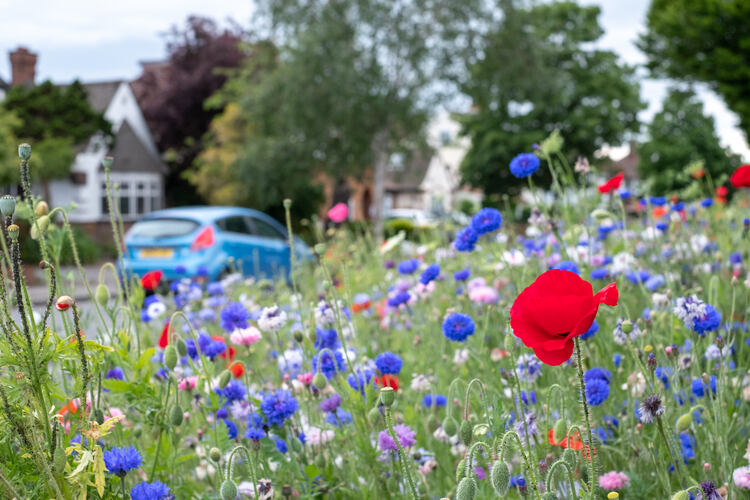
The nature-depleted UK should use its miles of road verges as wildlife corridors to help increase biodiversity
By
In his poem, And Did Those Feet in Ancient Time, one of Britain’s best-loved poets, William Blake, famously described England as a ‘green and pleasant land’. It’s a line that has been repeated again and again by anyone wishing to portray Britain as, well, a green and pleasant land. But, is it true? Sadly, according to many reports and studies it most certainly isn’t true – at least when compared to almost all of our neighbours.
In fact, the UK is officially (a report ranked the UK 189 out of 218 countries) one of the world’s most nature-depleted countries! We have lost around 97 per cent of our wildflower meadows since the 1930s and more than 73 million birds have vanished from our skies since 1970. A shocking report published back in September 2023 revealed that one in six species are at risk of disappearing from the UK, while a 2022 report, which rated 14 European countries on the general population’s connection to nature, placed the UK at the very bottom of the list.
Such statistics then could be said to show that anyone quoting Blake’s lines today might be using more poetic licence than the poet himself. But, can we change the situation around? Campaign group Nature 2030, whose mission statement is to build a coalition for global change and to tackle the challenges posed by plastic pollution, habitat destruction, and climate change, thinks that one way of making the UK a more wildlife-friendly place is to use our many, many miles of road verges as wildlife corridors. Doing so, they say in a report published this week, supported by conservation group Plantlife, would help increase biodiversity.
There are an estimated 1,600 different species of wildflower in the UK and the report claims that road verges, which, if added together cover an area of the UK the size of Dorset, contain nearly 45 per cent of the UK’s total plant diversity and are home to 87 species under risk of vanishing from the UK. The report says that by using nature-friendly road verges as wildlife corridors, we could reduce habitat fragmentation and make our towns and cities more permeable to wildlife. Essentially, this would stop urban landscapes from being barriers to nature and would turn them into bridges. Mark Schofield, Road Verges Advisor at Plantlife said: ‘Our road verges and green spaces can play an important role in nature’s recovery and deliver benefits for people if we unlock their potential as a network of connective wildlife corridors. With over 700 species of wildflowers calling road verges home, they can act as a vital sanctuary’.
Maintaining wildlife-friendly verges would be especially advantageous for pollinators such as bumblebees and butterflies.
According to the report the first steps that need to be taken to protect and enhance the biodiversity of our road verges are simple methods, such as reducing mowing frequency and increasing community engagement that will cost our town councils almost nothing. Other methods for improving our road verges include incorporating different structures of grassland, which helps boost species diversity. Going against the conventional wisdom of leaving grass cuttings so that they decompose and fertilise the soil, the report suggests that councils remove the cuttings. This is because it helps reduce nitrates in soil which slows plant growth and means verges don’t need to be cut so often.
‘With every mow and every cut, we are destroying the essential habitats, food and carbon-capturing environments needed for our country to thrive’ said broadcaster and activist, Chris Packham who backed the report. He said: ‘Let’s create communities with wildflowers on every verge, birds in every hedgerow and hedgehogs in every park. Our community spaces can still be practical, accessible and people-friendly whilst boosting biodiversity, and this report shows us how.’
Related articles:



